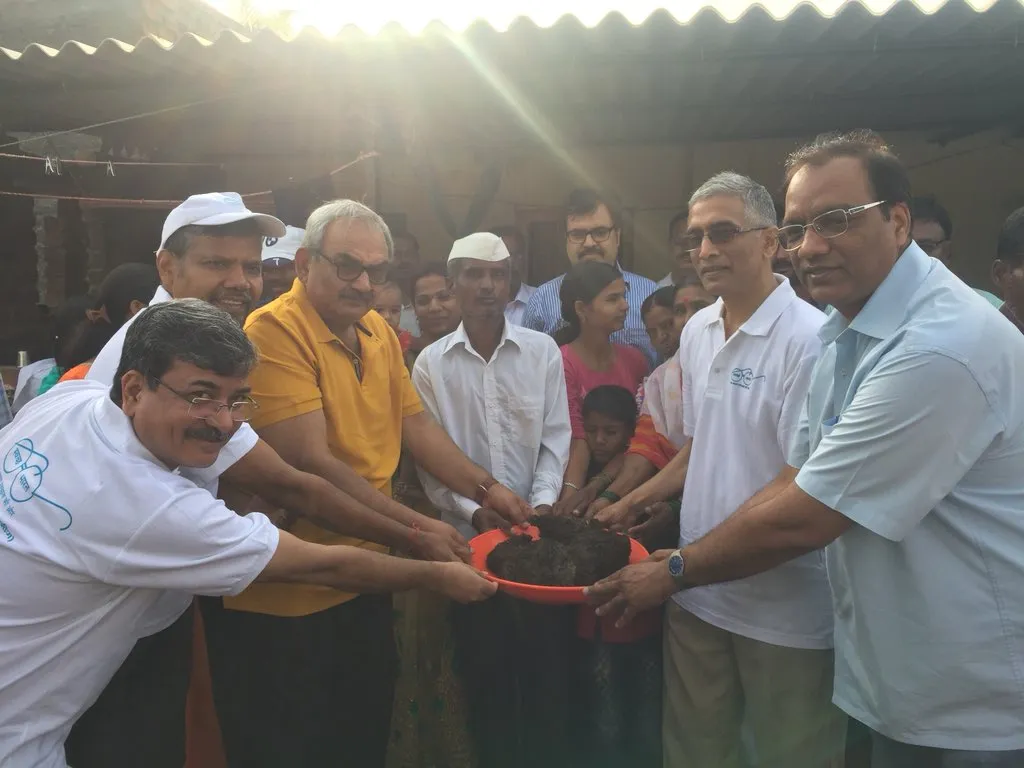-
CENTRES
Progammes & Centres
Location

In April, the Niti Aayog announced the Atal New India Challenges programme, a competition to capture technology startups and innovators across sectors and focus areas. It is important to note that seven of its 17 focus areas are to do with sanitation and cleanliness, which is linked to India’s flagship programme, the Swachh Bharat Mission (SBM). The Aayog has proved to be the much-needed spark plug for tapping into the Rs 3,962 billion unorganised sanitation economy of India.
Through this idea competition, the Niti Ayog, the government think-tank, will be funding the 50 best ideas, giving them Rs 10 million each along with necessary mentorship. Its objective is to serve as a platform for promotion of world-class innovation hubs, start-up businesses and other self-employment activities, particularly in technology driven areas to tackle the grand challenges confronting India on the sanitation and cleanliness fronts.
It has invited innovators and MSME’s working in the field of waste management recycling/reuse, garbage composition devices, quality of compost, decentralised composting, mixing blades for composting, waste in public spaces and dissuading public littering to participate in the programme.
Many successful rural entrepreneurs in India coming from the unorganised sector might not be able to meet the criteria and don’t qualify for funding opportunities such as these, thus, denying them a level playing field.
For example, the Niti Aayog in its call for entries specifies that this programme would be open for Micro, Small and Medium Enterprises (MSME) as defined in the MSMED Act, Start-Ups, as defined by the Department of Industrial Policy and Promotion (DIPP), Government or private R&D organisations (other than a Railway R&D organisation), academic institutions, academicians, or even individual innovators are encouraged to apply, provided they partner with entities with appropriate manufacturing capabilities. These are standard requirements that many such competitions demand.
One really wonders if the women villagers from Singla village in Rajasthan who make 1,000 cubic metre of biogas per day out of dung, poultry and food waste through an indigenous technology, would be able to participate in this? Apparently not.
For this, it is imperative that the Ministry of Drinking Water and Sanitation (MDWS) helps these entrepreneurs get recognised, help them network with academics and innovators, get corporate funding for them through a dedicated window or through other financial instruments and provide a standardised marketplace for innovative products and services in sanitation that could be used by both government and private agencies. While meeting the target of 1.88 million individual toilets, the MDWS has to ensure that the full range of services and products based around them, too, need to be generated in equal measure and new entrepreneurs get created to provide them.
In fact, the 7.3 percent cut in the SBM budget allocation in the 2018-19 fiscal, should be seen as an opportunity to further boost the existing informal sanitation economy and bringing it into the mainstream.
According to conservative estimates put together by the government for rural India, the current sanitation economy has the potential of creating 2.5 million jobs in both the skilled and unskilled sector.
In Maharashtra alone, there are 493 co-ed ashram shalas (tribal schools) hostels maintained by the state government with an estimated 7,395 toilets. The annual expenses for the floor cleaning phenyl alone is Rs 5.4 million, apart from the costs incurred on detergents, sanitary napkins, brooms, and salaries of toilets caretakers. A conservative estimate pegs this expense at Rs 34.8 million annually, which could be standardised and opened up to women self-help groups (SHG’s) or even local entrepreneurs or SMEs who manufacture hard brooms, detergent and phenyl.
It will open doors for projects like Bajagoli village in Karnataka, which provides biogas energy to the Manipal Institute campus or the junior engineer who innovated the bamboo toilet built in the uneven mountainous terrain of Yupia district in Arunachal Pradesh, which is now being constructed everywhere in the region. Success stories such as these have ample scope for expansion, getting formalised and replicated.
Like in Singla and Bajagoli, there are several women self-help groups (SHGs), non-profits, village groups, and small and big entrepreneurs working in these sectors. But here, the problem is a lack of assurance of accessible, affordable and good sanitation products and services. And even if they do exist, there is absence of information about their existence or they get lost given the high monopoly of a handful of other larger brands. This informal system does not give any level playing field to small entrepreneurs or SHG’s. Setting up a standardised market place for this economy to grow, and putting together a trained class of sanitation workers is a must.
A centralised government marketplace could incorporate the GOBAR-DHAN scheme announced by Finance Minister Arun Jaitley in the 2017-18 budget, which requires for solid waste and dung management and its conversion to produce compost, fertiliser and bio-CNG in all villages and cities in India. Apart from solid waste and dung management mentioned in the scheme, faecal sludge management (FSM), hygiene, liquid waste, and innovation in e-technology for sanitation are the other facets of sanitation management that can be tapped into for such a market.
Putting together a standardised market place is no easy feat. It will involve creating regulatory frameworks, establishing e-markets, identifying entrepreneurs and getting them registered and listed and putting together technology and products’ standardisation processes, among other things. There will be several departments including the Ministry of Finance and Department of Industrial Policy and Promotion (DIPP) which will need to work with the MDWS to roll this platform out.
The government’s SBM is keen to meet its target to make India clean by 2019. The challenge is gargantuan to say the least. If such innovative steps are not taken up urgently, India will be missing the bus.
Sanitation is about people, their habits and behaviour. It is also connected deeply with healthcare. In 2014, the United Nations World Health Organization (WHO) had pointed out on how for every dollar invested in water and sanitation, there is a $4.3 return in the form of reduced health care costs for individuals and society around the world.
The SBM will have to look at all these benefits in totality. But once it all comes together, India will be tapping into a huge potential that is rearing to go – of employability and entrepreneurship and a share of the Rs 3,962 billion pie of the country’s unorganised sanitation economy.
The author is a Senior Fellow, Observer Research Foundation. She partnered with Tata Trusts to give policy inputs for the MDWS draft framework on sanitation entrepreneurship models. Views expressed are personal.
The views expressed above belong to the author(s). ORF research and analyses now available on Telegram! Click here to access our curated content — blogs, longforms and interviews.

Sayli UdasMankikar was a Senior Fellow with the ORF's political economy programme. She works on issues related to sustainable urbanisation with special focus on urban ...
Read More +